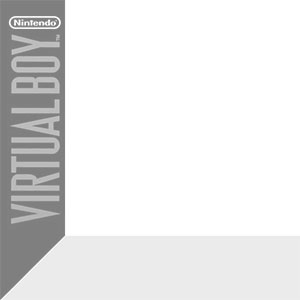Faceball was going to be one of the games to support the unreleased Virtual Boy GameLink cable. Like the Faceball games on other consoles (like Faceball 2000 on Game Boy and SNES), the Virtual Boy version could be described as an ego shooter with smiley balls. In a maze, which completely misses all unnecessary details and even textures, you have to hunt down and shoot all enemies in a certain time limit, which gets smaller from level to level. A radar in the upper right corner and a map of the maze, which you can be displayed by pressing Start, help you locate your foes. There’s a total of 11 enemies called “Shot Me”, “Ninja”, “Death”, “Stalker”, “Invisible”, “Bound”, “Shieldman”, “Ghost”, “Hydra”, “Wraith” and “Berserker”. Each one is acting different, which requires different tactics. For example “Shieldman” hides behind an undestroyable shield, while “Berserker” runs into the player and knocks you off. You shouldn’t let too often, though, because after only one death, the game is over and jumps back to the title screen. So the player should always keep an eye on a little Faceball in the bottom left corner, which tells about the remaining energy by the expression of its face. Bonus items which can be colected are bonus shields and speed-ups. Additionally, there are undestroyable glass wall, through which you can see, but not shoot enemies, which would have been a nice feature in multiplayer games. There are also destroyable walls, which are flashing.
After each level you get points for your remaining time, as well as for the enemies you destroyed, depending on the kind of enemy.
The game offers 2 modes of play, “Normal”, which is the main, 1-player game, and “Arena”, which most likely is the 2-player mode that uses the link cable. The “Normal” mode consists of 4 stages with 14 mazes each, which makes a total number of 56 levels.
A little oddity that makes the game special: Faceball is the only known game with a non-standard adjustment screen; instead of the “Virtual Boy™” logo, a Faceball logo is in the middle and small faceballs in the corners, instead of “VB” signs. Additionally it is the only game with the Automatic Pause feature disabled by default, but we doubt that it would have been that way in the final version.
The game is often referred to as “NikoChan Battle”, which is just a direct translation of the japanese name “ニコちゃんバトル”. Niko means something like “happy face”.


